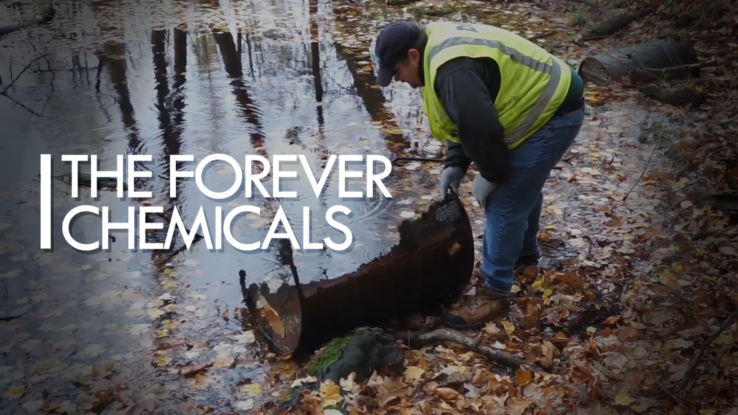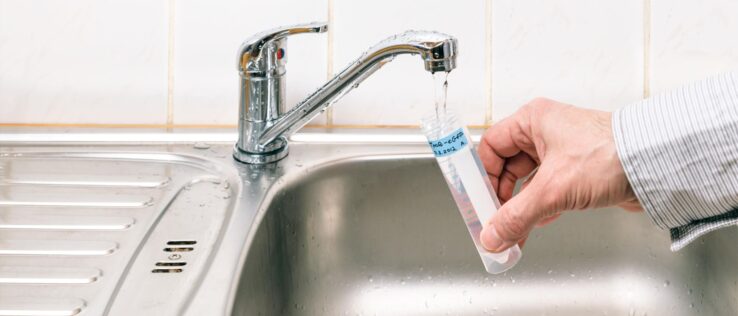PFAs, or Per- and polyfluoroalkyl substances, have become a leading health concern because of their negative effects on human health, together with the abundance in which they occur=. PFAs are commonly referred to as ‘forever chemicals’ because they are relatively indestructible, and unfortunately, they have been used in numerous industrial applications and consumer goods for many years.
Now, the alarm has been sounded due to PFA compounds being found in drinking water globally. To keep your drinking water safe, it’s essential to understand PFAs, their history, the extent of their presence, and the effects they can have on your health.
What Are ‘Forever Chemicals’?

Source: greatlakesnow.org
Per- and poly-fluoroalkyl substances are a group of fluorinated organic compounds that are used extensively both in industry and for consumer goods. The chemicals exploit the bond between carbon and fluorine, which is the strongest chemical bond in existence. PFAs are used to produce fluoropolymer products and coatings which are almost indestructible.
PFAs resist water, oil, and heat, making them ideal for surfactants that reduce surface tension, increasing their ability to coat, foam, and clean.
PFAs were initially invented in the 1930s by DuPont chemist Roy Plunkett, while he was attempting to create a new refrigerant gas. Accidentally, he discovered a substance that not only could not be dissolved, but strengthened other materials, making them more durable with a longer lifespan; this substance was given the name ‘Teflon’.
After its invention, Teflon was used in multiple products and applications, such as kitchenware, packaging, corrosion prevention, leather treatment, cosmetics, and stain repellents; in the 1960s the US Navy even went so far as to develop a foam for fighting fires using PFA compounds.
Although some reservations emerged in the 1960s, it wasn’t until the 1990s that PFAs began to show up globally in the environment. Simultaneously, laboratory progress improved analytic capabilities, allowing scientists to accurately measure PFAs in low concentrations and to analyze adverse health effects.
The very characteristics that made PFAs miraculous also made them a threat; there is no known method for degradation of PFAs in the environment; not bacteria nor sunlight, nothing will degrade PFAs and unfortunately, technological destruction is not only challenging but expensive. In 2001, a class action suit was filed against DuPont which led to in-depth studies on PFAs’ effects.
Potential PFA-Caused Health Effects
Unfortunately, PFAs have been linked to a variety of health issues and risks, including:
- Damage to the liver
- Increased kidney size
- Increased risks of liver cancer, testicular cancer, and kidney cancer
- Decreased fertility
- An increased risk of developing obesity
- A higher risk of ulcerative colitis, or thyroid disease
PFAs enter the blood, protein, fat cells, and the liver. Yet, while studies have concentrated on dozens of PFA compounds, there are thousands of PFA compounds in existence and circulating. Exposure to PFAs is common in a variety of ways; through the inhalation of pollutants in the atmosphere, direct skin contact, and through the ingestion of contaminated water and foods.
The ingestion of contaminated water and foods are thought to be the most common method of PFA exposure. This includes not only consuming food or water that has been directly contaminated, but also food that has been exposed to packaging with PFAs or cultivated in contaminated soil.
Regrettably, PFAs are invisible, tasteless, and scentless- minuscule chemical compounds that insidiously gain entrance into our bloodstream.
PFAs in Public Water and Private Well Supplies

Source: quenchwater.com
PFAs have been found in almost half of the nation’s tap water systems, while studies also point to the presence of PFAs in well water. If you use well water, be aware of what’s going in in your area, including operational factories, airports, or similar; private water sources, such as wells, are not officially monitored by governmental bodies or organizations.
PFAs in Packaged Water
Drinking bottled water can be just as risky as drinking tap water when it comes to PFA contamination, with some bottling enterprises acquiring their water from municipal supplies; they also do not have to test for a PFA presence or otherwise treat water for them. As yet, the U.S. FDA does not have quality standards or required PFA testing regulations in place for bottled water.
However, the low-density plastic used in commercially bottled water is not thought to be an FPA contamination source, so if you’re not drinking bottled tap water, it may be safer. A John Hopkins University study in 2021 tested 101 bottled waters and discovered that the majority did not contain PFAs, although some 39 did. There were, however, safer water brands and eco-friendly water products that had a very low or no PFA presence.
The chemical compounds find their way into packaged water through the natural water supply that furnishes the packaged water product. The two principal water sources used are public tap water systems and underground water systems. Contamination may come about from factory or facility discharges into the water supply; because there is no governmental regulation for PFAs, water treatment plants do not remove them.
PFAS in Sparkling Water

Source: assets3.cbsnewsstatic.com
Consumer Reports published the results of a comprehensive study in 2020 in which the PFAS content present in a variety of bottled water products was tested, including sparkling water. A handful of sparkling water brands were found to contain PFAS levels above the recommended 1pt threshold, including:
- Topo Chico (9.76 ppt)
- Polar Seltzer (6.41 ppt)
- Bubly (2.24 ppt)
- Poland Spring (1.66 ppt)
- Canada Dry (1.24 ppt)
- La Croix (1.16 ppt)
- Perrier (1.1 ppt)
The reports also identified brands that contained PFAS levels lower than 1 ppt, including:
- Sparkling Ice Black Raspberry Sparkling Water – No detected PFAS
- Spindrift (0.19 ppt)
- San Pellegrino (0.31 ppt)
- Dasani (0.37 ppt)
- Schweppes (0.58 ppt)
Other notable eco-friendly water brands, such as JUST Water, have third-party reports in place to confirm the safety of their products – all of JUST’s bubbled water products had non-detected (zero) levels of PFAS.
How to Test for FPAs in Packaged Water

Source: h2oequipment.com
The federal government has no testing requirements for PFAs in packaged water. While the FDA and EPA have been asked to regulate packaged water, neither has done so. The EPA does, however, offer a health advisory FPA level of 70 ppt for municipal tap water. Unfortunately, these quality standards do not apply to packaged water.
The IBWA (International Bottled Water Association) does require member companies that bottle 5 million gallons or more of water to test their packaged water annually for PFAs using the EPA method 5371. The IBWA limit is 10 ppt total PFAs.
Bottled water manufacturers can sample their products as often as they wish and can publish their results, but there is very limited voluntary reporting available. The accredited testing is done using the EPA 537.1 certified method. To do this type of testing, it is necessary to send a water sample to a state-certified laboratory that uses this EPA-developed testing method. Testing for PFAs with a DIY or at-home approach is not possible; the testing of water for PFAs needs quality analytical sensitivity to guarantee accuracy in results.
Final Thoughts
The pervasive presence of PFAs in drinking water, both tap and packaged, is a critical health concern with far-reaching implications. For consumers looking to safeguard their health, understanding the nature of PFAs and seeking out water brands that have been deemed safe through provable testing is the way to go.




